Flying was about bold attempts before World War I, about military flight during the war. However, after the war, civilian passenger traffic was already a realistic option, as there were planes that could take on board several passengers. It is no coincidence that after World War I, civilian airlines were founded all around the world.
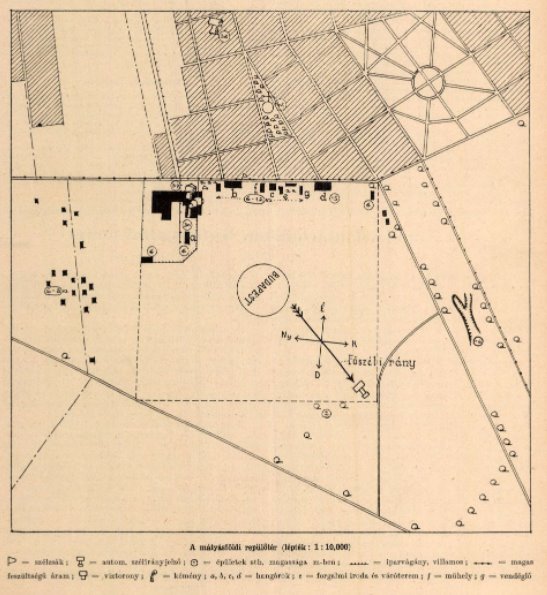
Site plan of Mátyásföld Airport from 1927 (Source: Aviatikai Értesítő 1 July 1927)
In Hungary, flying was restricted by post-war ceasefire agreements and then by the Trianon peace treaty, so Hungarian attempts were somewhat relegated to the background. The situation changed in 1922, when Compagnie Franco-Roumain de Navigation Aérienne, a French-Romanian-owned airline, was granted an exclusive license to operate a flight from Paris to Constantinople. Of course, the planes at that time could not fly that long distance, they were only able to make the trip with many landings, and one of these stations became Budapest, although at that time the planes flew only to Budapest, they could only fly on to Constantinople in the summer, because the infrastructure was finished only by then.
The planes would have landed in Mátyásföld as planned, back then the Hungarian civil airport was there, which served the purpose. The flight was originally intended to start in early April, but at that time there was a total ban on flying in Hungary by the allies. Due to the protests of England and Italy, it was not possible to start the planes at that time, but since the French-Romanian company could only start the flight with the Budapest stop, the permit was finally obtained by the end of April. This was also important because the company also had a contract with the Hungarian state, in which it undertook to launch the aircraft by 1 May otherwise it would have had to pay 100,000 francs in forfeit money. In return, the Hungarian state undertook to build Mátyásföld Airport.
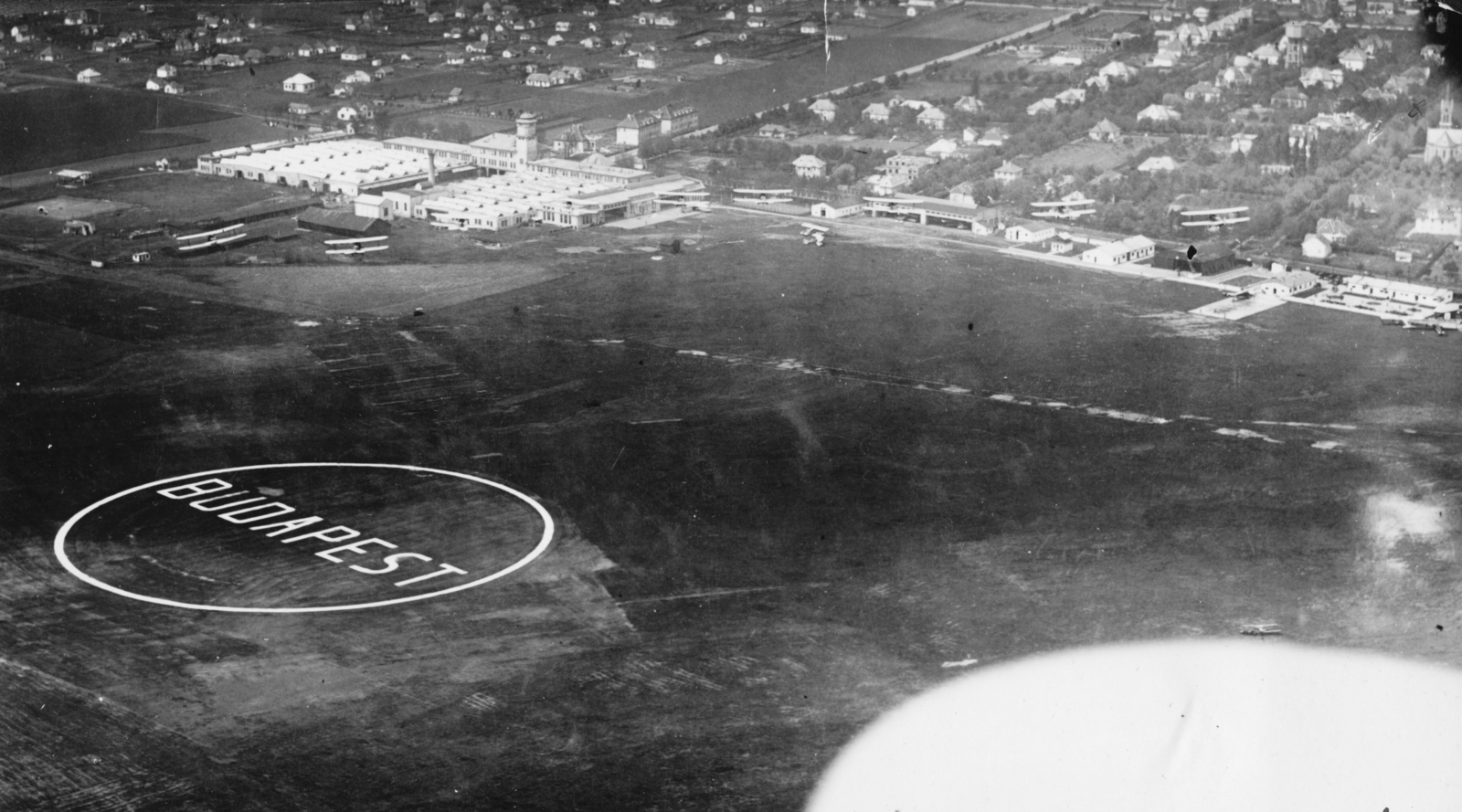
Aerial view of the airport in 1933 (Photo: Fortepan / No.: 41567)
Of course, let's not imagine Mátyásföld as today's airports. It was a grassy-sandy field, and a white circle with the inscription Budapest was painted on it to facilitate navigation. A few hangars, a simple traffic office, a radio station, that was the airport.
The airport was handed over on 29 April 1922, and the government was also represented, although at that time no aircraft was allowed to take off.
Of course, there were opinions that Hungarian aviation would fall into the wrong hands, because by the time the flight ban was lifted, foreign companies would dominate the Hungarian sky, and this was also the opinion of the Hungarian Aero Association, which advised its members not to attend the opening. However, with this step, the isolation could be broken and Budapest could join the international air traffic. The newspaper Ellenzék reported the first flight as follows:
“ The French-Romanian airline had fully prepared for the Budapest-Paris route after months of work, and the first plane took off for the French capital at quarter to seven on the morning of 1st May . The flights are operated by Compagnie France Roumaine de Navigation Aerienne and depart from Mátyásföld Airport every Tuesday, Thursday and Saturday, and from Paris on Mondays, Wednesdays and Fridays. ”
Of course, the distance between Budapest and Paris was also invincible for the planes, the passengers boarded the Henry Potez plane carrying four passengers, which flew only to Prague, where they boarded a larger plane. At the time, the plane had two passengers, a French and an English trader. The journey to Paris lasted 14 hours.
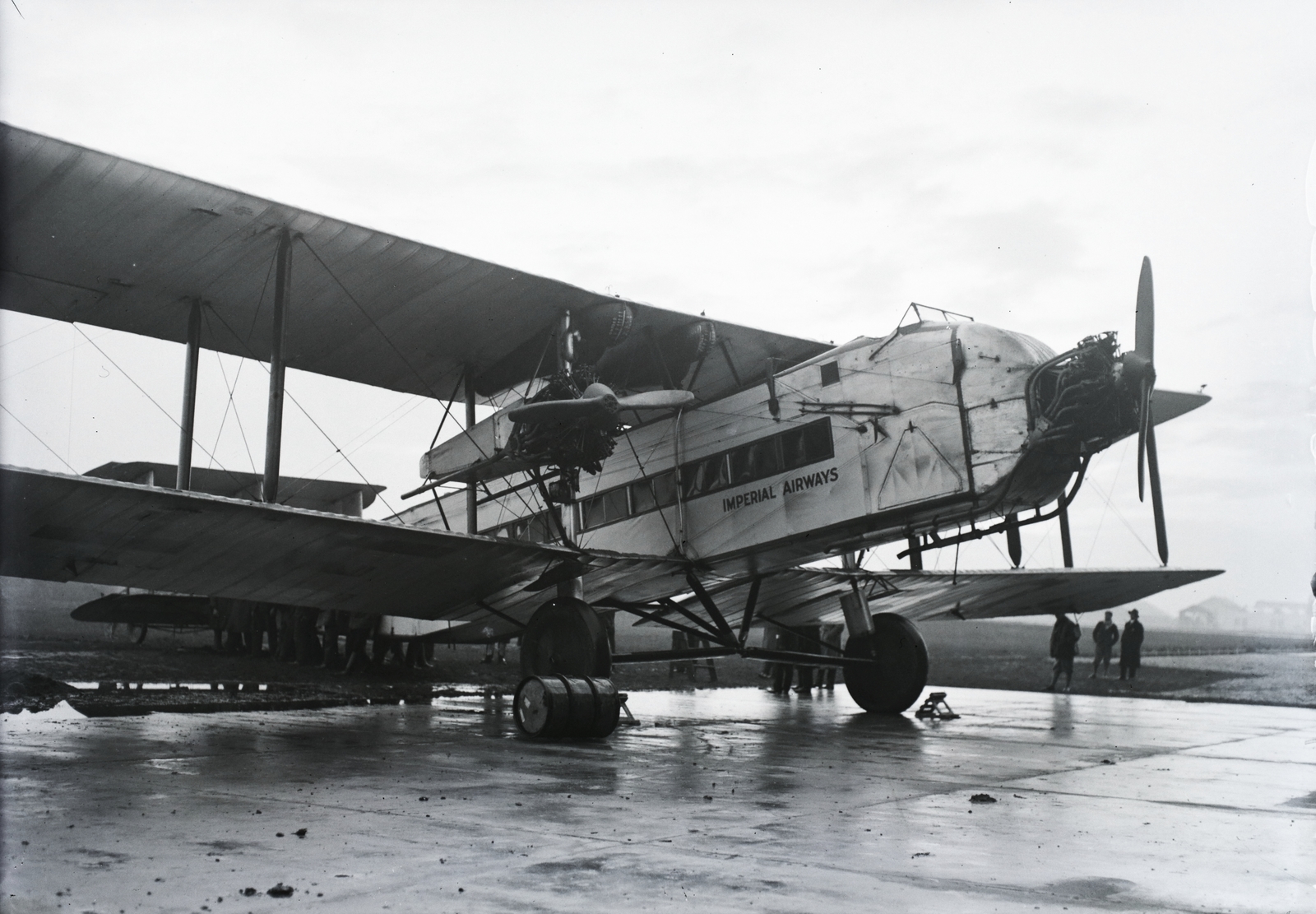
After the early small machines, larger ones arrived in the late 1920s. Pictured in 1928 is the Armstrong Whitworth Argosy aircraft of the Imperial Airways called City of Budapest (Photo: Fortepan, Hungarian Museum of Science, Technology and Transport / Archive / Negative Library / Hungarian National Museum Historical Picture Gallery)
The flight, as mentioned, terminated at Budapest at that time. The planes departed three times a week to Paris, reaching Vienna, Prague and Strasbourg. The price of tickets was as follows: the Budapest-Paris flight cost 762 francs, the Budapest-Strasbourg 560 francs, the Budapest-Prague 269 francs, and the Vienna-only ticket 130 francs.
Today, the 14-hour journey doesn’t seem fast, as you can easily get to Paris by car in this time or in little more, in 19 hours by train. However, in 1922 the train was twice as slow as the plane, and the ticket - in first class - cost 12 francs more than the fare for the plane. Passengers at the destination were also met by cars to be transported to the hotel or their apartment.
The planes also carried smaller parcels and mail, one kilogram of parcels could be sent to Paris by air for 8.25 francs and a letter for 30 crowns.
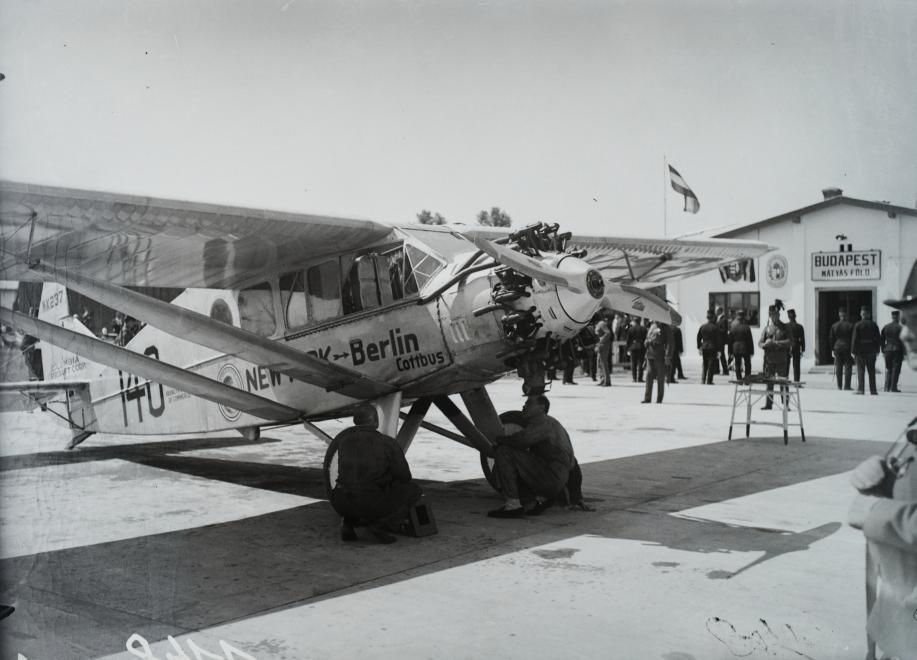
The reception building can be seen in the background of Mátyásföld Airport in 1927 (Photo: Fortepan, Hungarian Museum of Science, Technology and Transport / Archive / Negative Repository / Collection of the Historical Picture Gallery of the Hungarian National Museum)
Of course, not everything went smoothly, because, for example, the first plane that would have arrived in Budapest on 1 May did not even get past Vienna, where it got stuck on the ground due to landing gear problems. But it didn't bother anyone. According to the authorities who told the press at the inauguration of Mátyásföld Airport, flight was already safer than the railway, a great future was predicted for it, and Budapest was also expected to play an important role in this.
Mátyásföld remained the civic airport of Budapest for a long time, until the opening of Budaörs Airport, which was also developed in the late 1920s, and in the following years more and more airlines flew to Budapest.
Cover photo: Imperial Airways' Armstrong Whitworth Argosy aircraft called City of Budapest during landing (Photo: Fortepan, Hungarian Museum of Science, Technology and Transport / Archive / Negative Library / Hungarian National Museum Historical Picture Gallery)

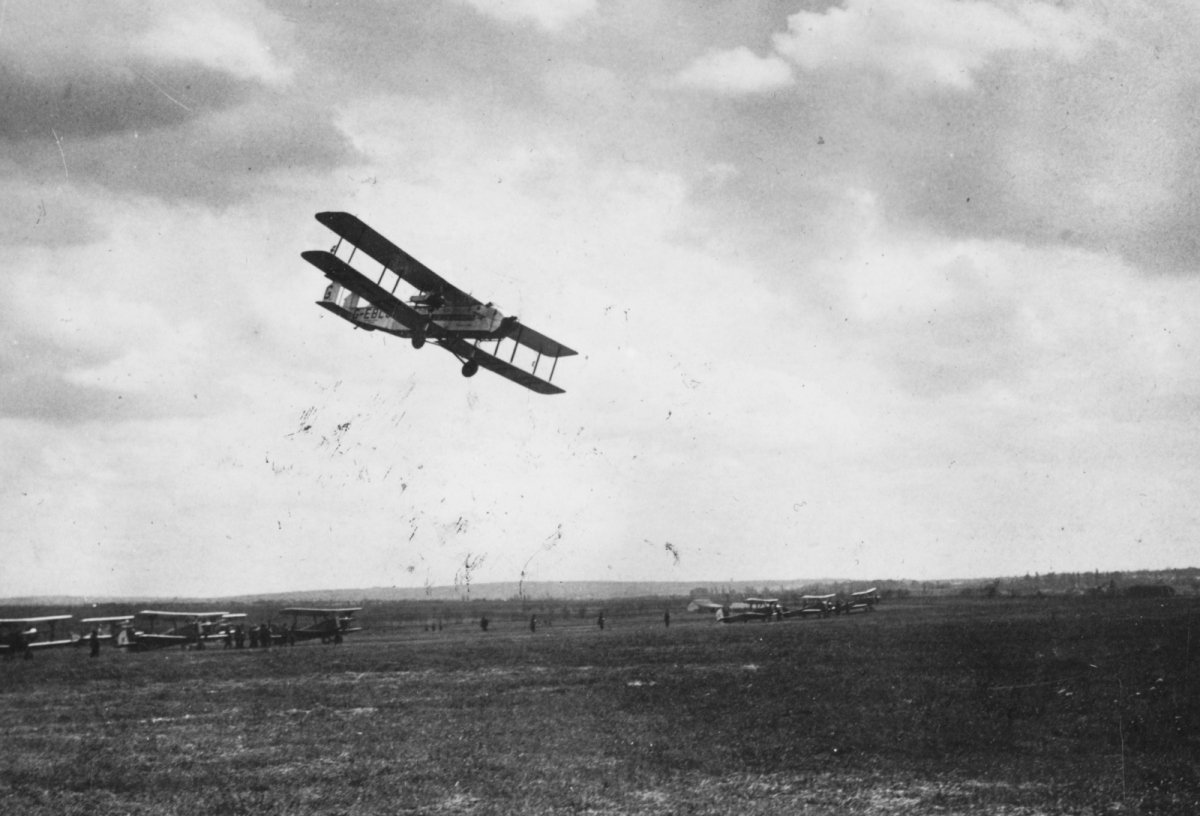


































Hozzászólások
Log in or register to comment!
Login Registration